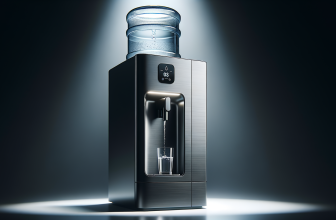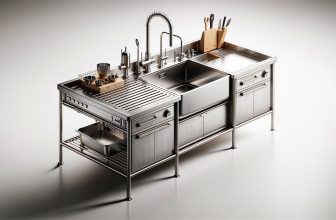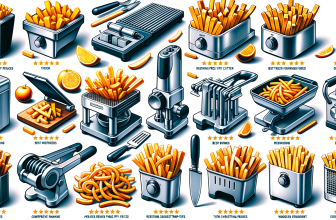
Ever wonder what makes a cleaver a culinary staple in both professional and home kitchens? A trusty cleaver is not simply about its heft or sharp edge; it’s a versatile tool designed for heavy-duty tasks like breaking down large cuts of meat, or as subtle as mincing garlic. Selecting the best cleaver knife could revolutionize your chopping experience, but with a plethora of options available, how do you choose the one that’s right for you?
Our Top Picks
Our #1 Top Pick: Wüsthof Classic 7-inch Heavy Cleaver
The Wüsthof Classic Heavy Cleaver is a beast when it comes to performance and durability. Boasting a 7-inch blade forged from a single block of high carbon stainless steel, this cleaver is well-balanced and incredibly efficient. Its weight is substantial enough to tackle tough sinew and bone with minimal effort. The full tang provides excellent balance and the triple-riveted handle ensures a firm grip. The blade is easy to sharpen and maintains its edge for prolonged periods, making it a top choice for professional chefs and serious home cooks alike.
Pick #2: Zwilling J.A. Henckels Twin Signature 7-Inch Vegetable Cleaver
Don’t let the name fool you; the Twin Signature Vegetable Cleaver by Zwilling J.A. Henckels is more than capable of handling a wide range of cutting tasks. The high-carbon stainless steel blade offers precision cuts, and the laser-controlled edge ensures long-lasting sharpness. Its broad blade also doubles as a convenient tool for transporting prepared ingredients from cutting board to pan. Plus, with an ergonomic polymer handle that’s bonded tightly to the blade, it’s comfortable for prolonged use and is dishwasher safe, though hand-washing is recommended for maintaining the best edge.
Pick #3: Dalstrong Gladiator Series Heavy-Duty Cleaver
The Dalstrong Gladiator Series Heavy-Duty Cleaver is not only striking to look at but also provides exceptional performance. This full-tang powerhouse is forged from high-carbon German steel and boasts a hand-polished edge at 14-16 degrees per side. Its design is a testament to both functionality and strength – the pakka wood handle is treated for water resistance and provides an easy grip. Additionally, Dalstrong’s customer service and aftercare is notable, making this cleaver a great value for its quality and performance.
Pick #4: Shun Classic 7-inch Vegetable Cleaver
Handcrafted in Japan, the Shun Classic Vegetable Cleaver melds exceptional craftsmanship with modern functionality. Its VG-MAX steel blade holds a razor-sharp edge and offers the kind of precision that Shun knives are renowned for. The D-shaped ebony PakkaWood handle is not only aesthetically pleasing but fits comfortably in the hand, ensuring ease of use. Although designed for vegetables, the broad and sharp blade is sufficiently versatile for other chopping tasks as well, though not for cutting through bone.
Pick #5: Dexter-Russell 8″ Heavy-Duty Cleaver, Traditional Series
A staple in numerous restaurant kitchens, the Dexter-Russell 8″ Heavy-Duty Cleaver from their Traditional Series has a large, heavy blade that makes quick work of tough jobs. It’s made from high-carbon steel which makes it incredibly sharp and the edge is easy to maintain. The wood handle offers a contrast to modern designs and offers a classic, solid feel. This cleaver is especially preferred in commercial settings for its durability and straightforward functionality and is offered at a price point that represents excellent value for money.
What to Know Before You Buy
- Type of Steel: High-carbon stainless steel is a good choice as it offers durability along with resistance to rust or stains.
- Weight and Balance: The weight of a cleaver affects its efficiency in performing heavy chopping tasks, while balance influences the ease of repetitive slicing.
- Edge Angle: Sharper angles can offer more precision, whereas wider angles are more durable and suited for heavy-duty tasks.
- Handle Comfort: A comfortable handle reduces hand fatigue, essential for those who spend a lot of time prepping food.
- Size of Blade: The blade size should correspond to the tasks you’re planning to use it for — larger for meats and smaller for veggies and precision work.
- Maintenance: Consider how much time and effort you are willing to invest in sharpening and caring for your cleaver. Some may also be dishwasher safe for added convenience.
Factors to Consider Before Buying
- Purpose: Determine whether you need a cleaver for heavy-duty cutting, like through bone, or for finer slicing and dicing.
- Construction: Look for full-tang designs that provide better strength and long-term durability.
- Brand and Warranty: Trusted brands often offer better quality and customer service; warranties can protect your investment.
- Price: More expensive doesn’t always mean better, but invest in the best you can afford for better long-term value.
- User Reviews: Insights from other users can guide you on a product’s real-world performance and durability.
- Care Requirements: Consider whether you need a low-maintenance cleaver or if you’re prepared to care for one that requires more attention.
Why Trust ChooseRight?
At ChooseRight, we pride ourselves in our meticulous approach to reviews. We’ve scoured thousands of reviews, spoken with kitchen professionals, and conducted hands-on testing with various cleaver knives to ensure that our recommendations are grounded in actual user experiences and expert insights. You can trust that the products we endorse are tried and tested to meet stringent standards of performance, quality, and durability.
Finishing Thoughts
Selecting the best cleaver takes careful consideration as it’s an essential tool that if chosen correctly, simplifies kitchen prep and improves your cooking experience. By focusing on key factors such as blade material, handle comfort, and overall balance, you can find a cleaver that matches your cooking style and needs. With our comprehensive reviews and expert advice, you’re equipped to make an informed decision, ensuring that your choice is one that stands the test of time and enhances your culinary adventures.
Frequently Asked Questions
What is a cleaver knife used for?
A cleaver knife, often referred to as a butcher’s knife, is a large, broad-bladed knife used for heavy-duty tasks. It is ideal for chopping through thick meat, dense cartilage, bone, and tough vegetables. Some cleavers are also designed for lighter tasks like mincing herbs and vegetables.
How do I choose the best cleaver knife for my needs?
When choosing a cleaver knife, consider the weight, balance, and size of the knife. A heavier cleaver might be necessary for cutting through bones, while a lighter one could be sufficient for chopping vegetables. The material of the blade (such as stainless steel or carbon steel) and handle ergonomics are also important factors.
What is the difference between a meat cleaver and a vegetable cleaver?
Meat cleavers are typically heavier and thicker, designed to cut through bones and joints. They have a broad side for smashing and a sturdy edge for chopping. Vegetable cleavers, also known as Chinese cleavers, have a thinner blade designed for slicing and dicing vegetables. They are lighter and not intended for cutting through bones.
Can a cleaver knife be sharpened at home, and if so, how?
Yes, a cleaver knife can be sharpened at home using a sharpening stone, honing rod, or a knife sharpener. It’s important to maintain the correct angle and follow the manufacturer’s instructions for sharpening. Some cleavers may require professional sharpening due to their thickness and the type of steel.
How should a cleaver knife be maintained?
Cleaver knives should be cleaned by hand with warm soapy water and dried immediately to prevent rusting, especially if the blade is made of carbon steel. Regular sharpening is necessary to maintain the edge, and the knife should be stored in a knife block, sheath, or a magnetic strip to protect the blade.
Are there safety concerns I should be aware of when using a cleaver knife?
Safety is paramount when using a cleaver due to its weight and sharp edge. Always use a cutting board that’s stable and secure. Keep your fingers away from the edge, and cut using a stable, controlled motion. Do not attempt to catch a falling cleaver, and keep it out of the reach of children.
Can a cleaver knife be used for tasks other than cutting meat and vegetables?
Yes, a cleaver can be quite versatile. Apart from cutting meat and vegetables, it can be used to crush garlic or ginger with its broad side. Additionally, it can serve as a tool to transfer chopped items from the cutting board to a pan or pot.
Why are some cleaver knives much more expensive than others?
The price of a cleaver knife can vary depending on the materials used, the brand, the craftsmanship involved, and the country of origin. High-quality steel, a reputable brand, and precision manufacturing can all contribute to a higher price tag.
Is it necessary to have both a meat cleaver and a vegetable cleaver?
Whether you need both types of cleavers depends on your cooking habits and preferences. If you regularly prepare large cuts of meat and also want a knife for precise vegetable work, having both may be convenient. However, for many home cooks, a single versatile cleaver may suffice.
Where is the best place to buy a cleaver knife?
Cleaver knives can be purchased at kitchenware stores, online marketplaces like Amazon, specialty knife shops, and directly from the manufacturers’ websites. Always research and read reviews before making a purchase to ensure you are getting a quality product.







